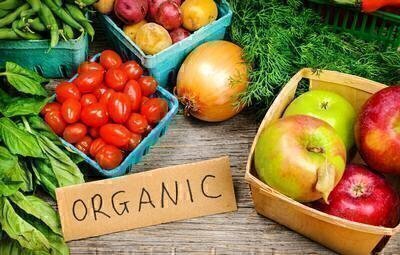Which Stores Offer the Lowest Prices for Organic Food?
Last updated November 2022
 While there is debate on whether organic food is safer, more nutritious, or tastes better than conventionally grown products, if your primary reason for buying organic is that you want to do your part to lessen the impact farming has on the environment, you’re doing the right thing. Much research has found the practices used by organic farming cause less harm to the environment than nonorganic practices (although things aren’t as clear on organic meat production).
While there is debate on whether organic food is safer, more nutritious, or tastes better than conventionally grown products, if your primary reason for buying organic is that you want to do your part to lessen the impact farming has on the environment, you’re doing the right thing. Much research has found the practices used by organic farming cause less harm to the environment than nonorganic practices (although things aren’t as clear on organic meat production).
But buying organic means paying a lot more for food. The market basket we used to shop local grocery chains and stores included 25 fresh produce and 37 meat and dairy products. When we survey stores for their prices for produce, meat, and many of our dairy items, we seek the lowest-priced items available, which often are nonorganic products. But when we looked for organic-only options, we found striking price differences: Overall, we found organic products at local grocery stores cost 69 percent more than their nonorganic counterparts.
The table below indicates how the Chicago area chains and stores we surveyed compare for their prices for organic produce, meat, and dairy products. The $92 score in the organic produce column for Trader Joe’s means that its prices at the store we surveyed for organic produce were about eight percent cheaper than the average prices for the comparable organic produce items at all stores we surveyed. The $111 score for Whole Foods means that its prices for organic produce were about 11 percent higher than average.
As you can see, the organic-price penalty is bigger at some stores than at others. Woodman’s prices for organic produce, meat, and dairy, for example, were 93 percent higher than its nonorganic alternatives, whereas Trader Joe’s charged only about 54 percent more for organics.
Surveyed customers of Fresh Thyme Market, which sells mostly organic products, gave it very high marks for the quality of its produce, and its prices for organic produce were only about five percent higher than average—lower than organic prices at Whole Foods.
Know that while buying and eating organic likely does lessen the impact of agriculture on the environment, the most environmentally friendly approach is probably to eat less meat (or none); minimize purchases of highly processed and packaged food; as much as possible eat what’s in season; and whenever possible buy products grown or raised locally that didn’t have to be shipped a long distance.
Want info on locally grown food sources? The nonprofit LocalHarvest.org offers a fantastic online database of searchable listings of farmers’ markets, CSAs, farm stands, groceries, and restaurants.



